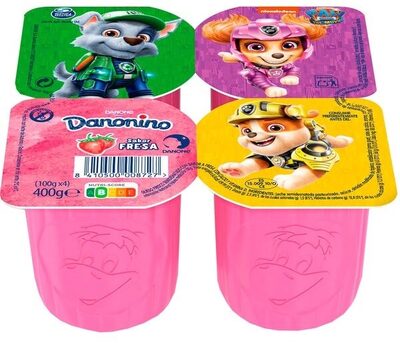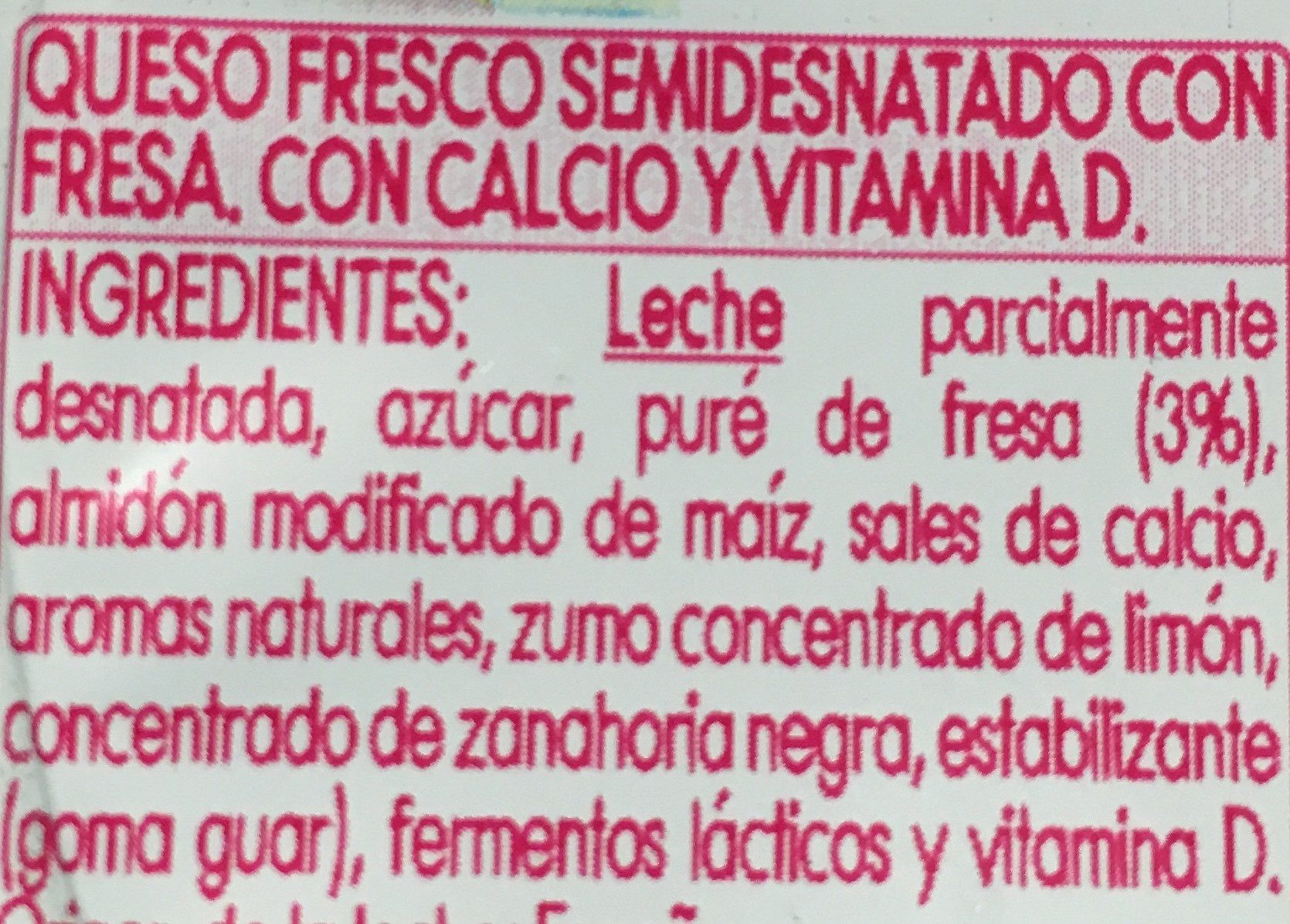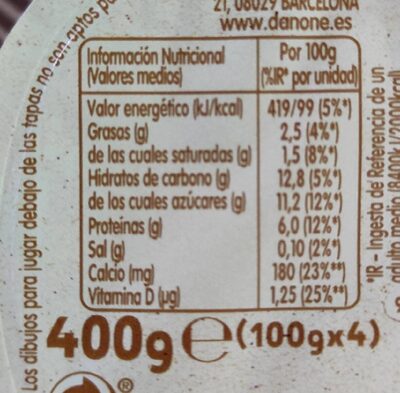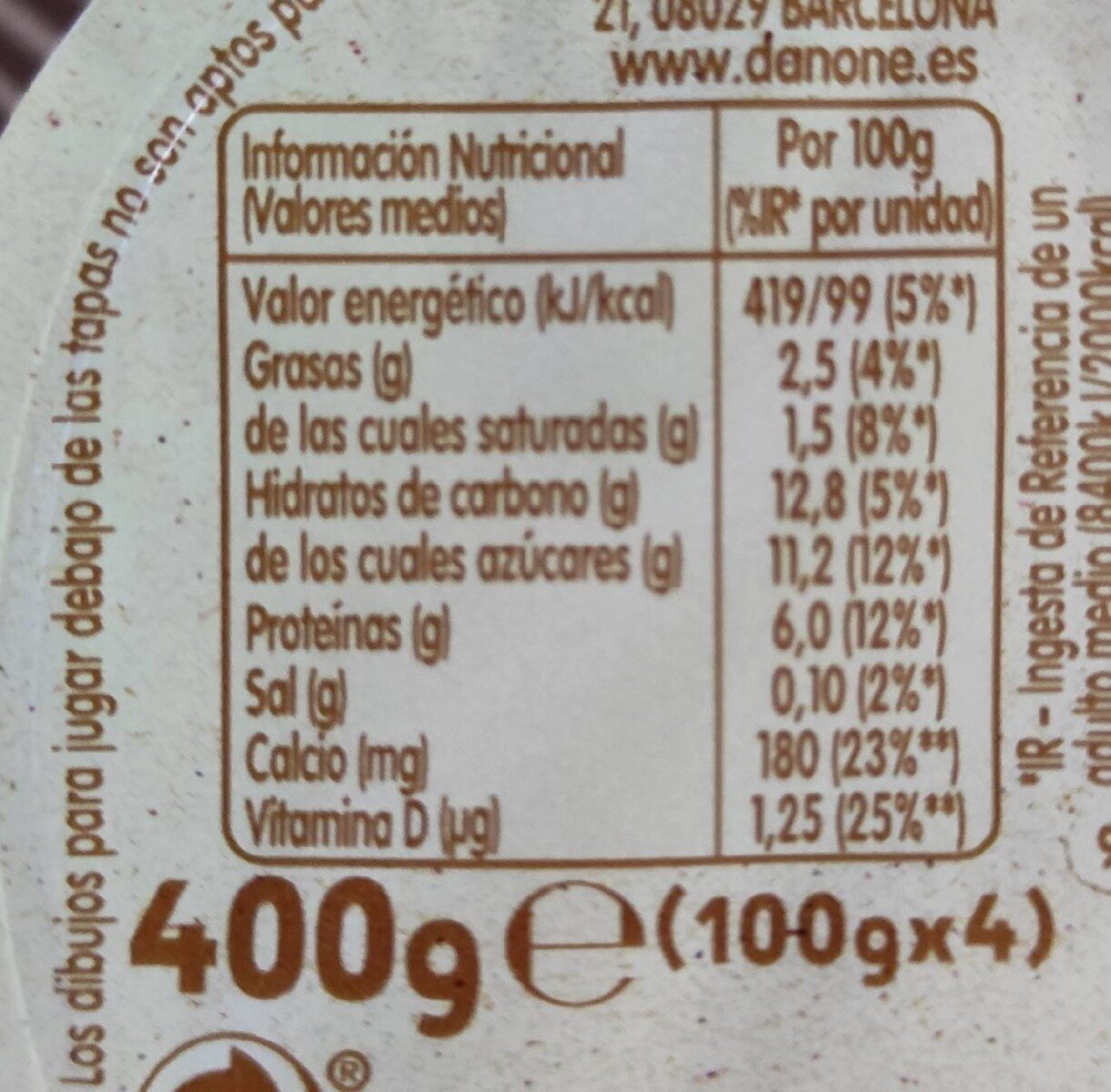Danonino maxi sabor fresa - Danone - 400 g (100 g x 4)
This product page is not complete. You can help to complete it by editing it and adding more data from the photos we have, or by taking more photos using the app for Android or iPhone/iPad. Thank you!
×
Barcode: 8410500008727 (EAN / EAN-13)
Common name: Petits suisses aux fruits aromatisés
Quantity: 400 g (100 g x 4)
Brands: Danone
Categories: Dairies, Fermented foods, Fermented milk products, Desserts, Dairy desserts, Fermented dairy desserts, Yogurts, Petits suisses
Labels, certifications, awards: Nutriscore, Nutriscore Grade A
Traceability code: ES 15.00910/O CE
Matching with your preferences
Environment
Carbon footprint
Packaging
Transportation
Report a problem
Data sources
Product added on by jbarcelona
Last edit of product page on by roboto-app.
Product page also edited by daisylowen, desan, inf, jog13ovd, kiliweb, manuquinoa, musarana, openfoodfacts-contributors, thaialagata, yuka.Vi80Z0hZMHhwUFUxblBJMXhoYnBwczRxK3NTWmVENlFMTWNOSWc9PQ, yuka.Vi8wZkxhWWp2TnNWcDh3NG8wcmV5L05vL0xXWVUzbnVDK29USVE9PQ, yuka.sY2b0xO6T85zoF3NwEKvlhBHatfGpirnGTbTyBbaxuWSdLXoW-kjxJL2aqs.










